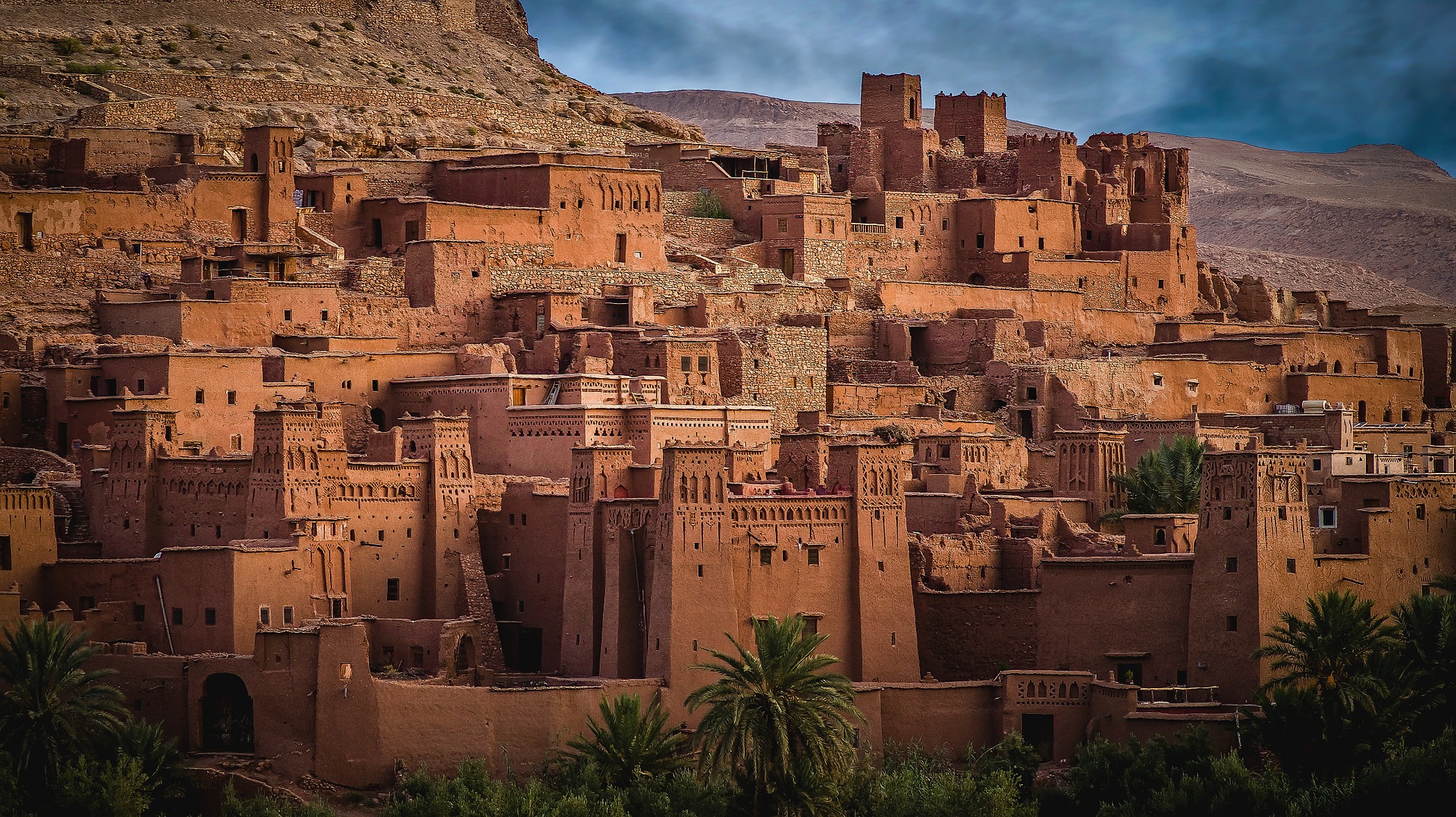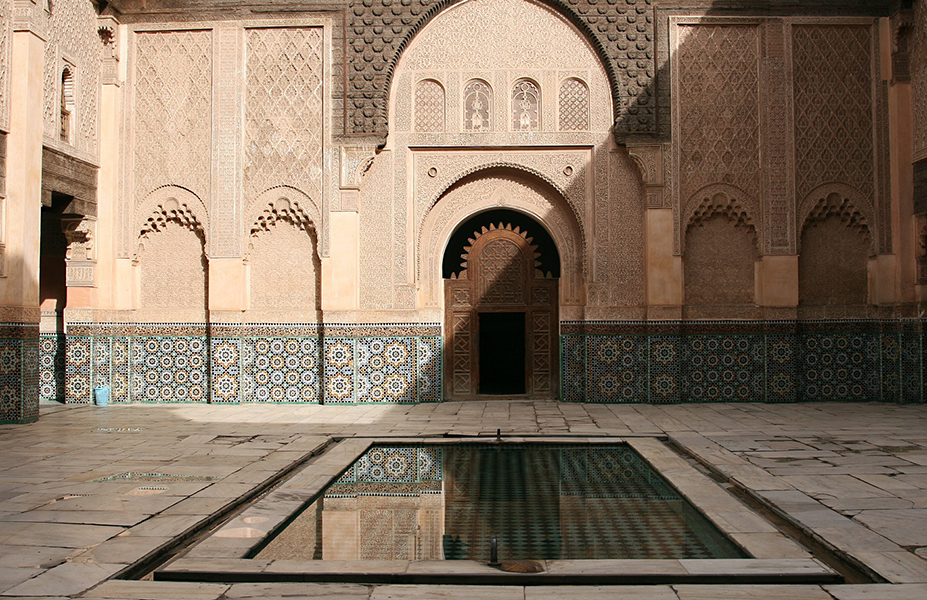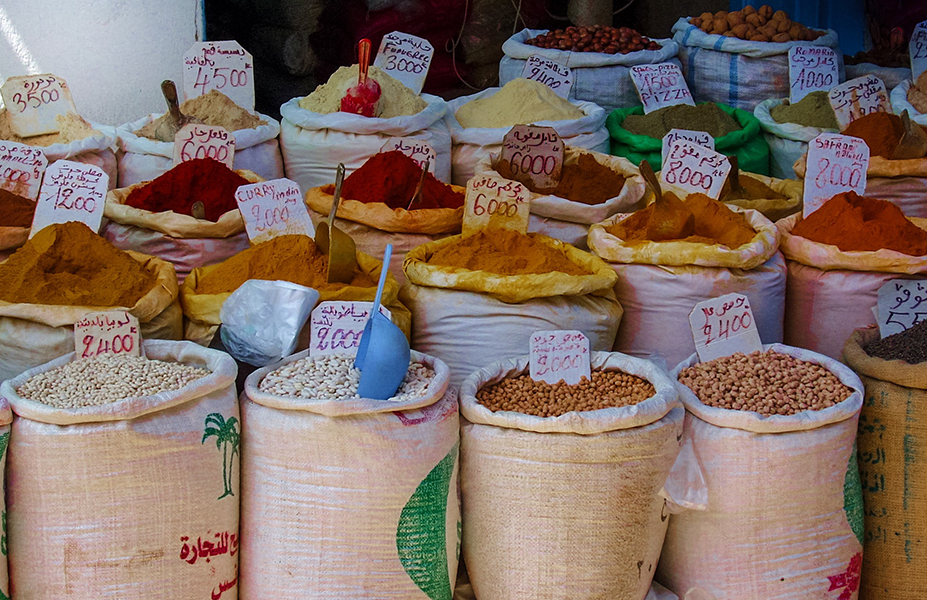Currency – Moroccan Dirham (DH)
Language – Arabic, Berber, French
Vaccine – There is no mandatory vaccination to travel to Morocco
Electricity – 220V. 50 Hz. Power plugs and sockets are of type C & E
EMERGENCY TELEPHONES
National Police: 190 or 112 from mobile phones
Medical emergency: 150
Anti-poison centre: 081 00 01 80
Morocco is a country located in North Africa and bathed by both the Mediterranean Sea and the Atlantic Ocean, covering an area of approximately half a million square kilometers.
Morocco is an exciting destination that takes you to another era, another culture, other smells, colors and flavors… what more could you ask for? You don’t need a time machine to live unique experiences firsthand and feel like a true explorer.
Morocco offers a range of possibilities to anyone who dares to enter it; In addition, its proud citizens have made an effort to preserve their identity and customs. If we add its heterogeneity to this, we find a country that provides endless experiences frozen in time.
You can explore its medinas while avoiding donkey transport, sleep in the Sahara desert under a tent or even travel through more advanced cities such as its capital, Rabat, while their continuous calls to prayer remind you that they will never lose what they identifies them.
In short, Morocco offers an endless number of opportunities that will make you wonder how it is possible that at such a short distance you can visit a world so different from ours.
TOURIST SITES OF MOROCCO
Marrakech – Marrakech is an endless city of great variety and contrast ; so much so, that if you walk through the old and new areas they seem different cities.
You can get lost in its great medina avoiding its citizens on a motorcycle, the main means of transport in the city, stroll through its souk or discover its many places and monuments , always with the minaret of the Koutoubia mosque as a backdrop and the Jemaa El square Fna as the nerve center from where everything connects.
Rabat – Kasbah of the Oudayas alone is worth a visit to Rabat: a citadel that is the starting point of the city and with a style that is more reminiscent of northern streets, such as those of Asilah. Next to this we find the medina, which although it is true that it is not as architecturally interesting as others in Morocco, its almost rectilinear layout makes it a real rarity within the country.
Another reason to explore the city is the Hassan Tower, an unfinished minaret with a forest of columns guarding it, witnesses of what could have become one of the largest religious buildings in the world.
Tangier – Tangier is recognized for its strong multicultural identity, forged in the middle of the last century when it was distinguished as a great cosmopolitan city and a place of interest for many artists and other influential people.
Tangier is the perfect starting point for the country. A city with a clear universal identity. The most equidistant place between Morocco and the rest of the world.
Sahara desert – Contemplating and touring dunes, enjoying a starry sky and sleeping in a tent marks all travelers. But to summarize the Sahara in that experience would be to reduce a whole world to a striking postcard. Equally important is its culture, a synthesis of the African and the Berber, and with manifestations both in the field of music, dance or writing.
Fez – It is impossible to talk about what Fez stands out for and defines without starting by naming its oldest medina, declared a World Heritage Site by UNESCO. Once you enter and walk through its labyrinthine streets, while we cross, or rather try to avoid, the transport of goods (mainly donkeys and motorcycles), it will be impossible not to feel that we have moved to another era.
DAILY LIFE
One of the most deeply-rooted customs in Morocco is that of drinking tea. This infusion is taken at all hours and it is common to share the drink with guests, guests and even with shop visitors.
That hospitality is demonstrated by sharing tea with strangers. Both in Morocco and in the Arab world, a guest will always be well received, even if it is a person who barely knows each other, sometimes they are also invited to eat.
At lunchtime someone who is not from this country will be surprised at the abundance, so it will not be rude to leave food on the plate. And when the visitor is invited to a Moroccan family dinner, they should wash their hands and should not try any bite without first hearing the prayer that the owner of the house will make.
IN BARS AND RESTAURANTS
Drinking alcohol is not on the list of main customs in Morocco. In some restaurants in the country the consumption of alcohol is allowed and alcoholic beverages are served. However, it is not the general rule and the visitor must understand this aspect, as these establishments are not obliged to sell alcohol.
In Marrakech you can practically eat at any time of the day , if it is not in a restaurant, you can do it on the street, in one of the many mobile stalls that sell food, freshly baked breads, crepes, soups …
TIPS
It depends on the situation and of course, it all depends on whether you think they have given you a good service or not. The standard of living in Morocco is much higher in relation to this salary. Therefore, any tip is more than welcome. In fact, it could be said that many people in the world of tourism or services live on tips.
RELIGION
99% of the population are Muslim
HOLIDAYS
1 of January – New Year
January 11 – Independence Manifesto Day
May 1 – Labour Day
July 30 – Throne Day
August 14 – Throne Day
August 20 – Revolution day
August 21 – Youth Day
November 6 – Green March Day
November 18 – Independence Day
CLIMATE
The northern area, between mountains and the coastline with a Mediterranean climate, which translates into mild summers and cool, humid winters.
The center of the country, where temperatures increase considerably, summers can be very hot, hovering around 38 degrees Celsius. And if we move south, the climate will turn desert, with summer months exceeding 40 degrees but with more pleasant winters.
The mountainous areas are characterized by their low temperatures, dropping below zero degrees in winter.
Morocco is a vibrant country, as you can see in its people, its dances and its music, but especially in its food. Each dish fills our palate with a multitude of exotic and familiar flavors, making each of our meals an authentic travel experience.
TYPICAL DISHES
CousCous: wheat semolina seed cooked and accompanied by vegetables, lamb, beef or chicken, is one of the most traditional dishes, which is usually prepared at home on Fridays, their day off, usually dedicated to praying in the mosques, go to the hamman and walk with the families.
Tajine: El Tajín is another of the dishes that you will find everywhere. Like couscous, you can eat it at a fairly cheap price in any restaurant, and the quantity is usually considerable, so it can be shared between two. This delicacy is prepared in a clay pot with a conical lid, and there are different varieties among which we would highlight the Lamb Tajine with legumes, almonds and plums, dressed with cinnamon or saffron, and the Chicken Tajine, with lemon, olives and a spicy hot tomato sauce.
Pill: The Pastilla, pastela or bastilla can also be found in Algerian or Tunisian food. Without a doubt, we recommend that you do not stop tasting the perfect balance that it offers between sweet and salty, which is almost an aphrodisiac. A plate is very elaborate, with layers of pastry filled sheets meat of chicken or pigeon, interspersed with almond paste, all baked, seasoned with cinnamon and powdered sugar.
Bissara: It is a simple bean puree with a generous splash of olive oil that you can see that they serve in many places during breakfast or as a companion to other dishes. Do not miss the opportunity to eat it accompanied by the fluffy Moroccan bread.
Harira: This soup is made with lamb or beef, legumes and tomato, seasoned with black pepper, coriander and ginger, and is usually accompanied with dates.
Kefta: Kefta is minced meat garnished with pine nuts, onion, garlic, parsley, hot paprika, cumin, and olive oil, served in different ways and all of them are delicious.
Touajen and hout: For lovers of intense flavors, a stew of pickled lamb or chicken, which can also be made with fish, but in this case it is called Hout.
Eggplant Zaalouk: The dish consists of aubergine boiled and cooked with a tomato and garlic sauce, seasoned with cumin, sweet red paprika and lemon juice. All this is allowed to cool and black olives, chopped coriander, olive oil, salt are added, and ready to eat!
Méchoui: The méchoui or meshwi is whole lamb slowly roasted in an earth oven until the meat comes off easily with the hands, and served with couscous, almonds and plums. It is usually included in the menu of occasions, holidays or when they have guests.
Djadja Mahamara: Our last recommendation is a stewed chicken with raisins, semolina and almonds, which you should not miss either.
BEVERAGES
Alcoholic beverages are restricted in Morocco, but they have many other ingredients to make a variety of drinks with different combinations. Go ahead and taste these exotic flavors!
Green tea with mint: classic is green tea flavored with mint leaves
Grass Maria Luisa: relaxing, fresh infusion and ideal for sleep
Tea with shiba: helps eliminate the sensation of cold and has medicinal properties for the body
Moroccan coffee with a very aromatic flavor: the spices most used to make combinations in coffee are cinnamon, ginger, nutmeg, saffron and anise
Orange juice: the star drink of Marrakesh. Natural, they are squeezed right there and served in a crystal glass
LOCAL FRUITS
Barbary fig, Figs, yellow melons, small melons, watermelon, grapes
AIR TRANSPORT
Taking a plane in Morocco can be an interesting solution to travel quickly between two cities that are far from each other. Of course, it is a comfortable and safe environment, although with it you lose part of the charm of traveling by road, in which you perceive how the landscape changes through the window.
The company in charge of operating these national lines is Royal Air Maroc or its subsidiary Royal Air Maroc Express.
BOAT TRANSPORT
There are more than ten routes that connect different ports in Europe and Morocco and that are open to the public. They all work in both directions.
BUS TRANSPORT
You must understand that in Morocco as a general rule you are not usually in a hurry. Taking into account that the coach is the most economical means of transport and the one chosen by Moroccans for medium-long distances, it is usually “adapted” to their lifestyle.
In addition, they tend to be poorly maintained, and can even break down en route, forcing passengers to wait for the next one. All this translates into more than probable delays, being common that we arrive at our destination an hour later.
Therefore it is only recommended as an alternative option for routes where the train or taxi is not possible.
RAILWAY TRANSPORT
The Moroccan national train company is the ONCF, and its website indicates routes, schedules and prices (in French). It also allows you to book online, but unfortunately it is necessary to have a Moroccan credit card, to which we must add that sometimes the website does not work as it should.
It is a very used medium for long distances; It has the disadvantage of being somewhat slow and there are delays from time to time, but it is more comfortable than the bus or taxi, and much cheaper.
It has two categories (first and second class) with a difference of approximately 30% on the value of the ticket. If it is not an economic upheaval, I recommend buying it first class: they are much more comfortable, most importantly, you have the assigned seat.
It is important to know your coverage. Simplifying, it runs along the Atlantic Coast (from Tangier to El Jadida, passing through Asilah, Rabat, Casablanca…), connecting Fez with the North and Marrakech with Casablanca. Therefore, it is enough to explore the Atlantic Coast and the most tourist cities, but if you want to visit more remote places you will have to combine it with other means of transport.
ROAD NETWORK
The network of roads and highways of Morocco has experienced a considerable improvement in recent years. Currently, there are more than 14,000 kilometers of highways and 60,000 of conventional roads in good condition. However, there are still many narrow and unpaved sections and care must be taken when driving at night.
DRIVING
Driving is on the right. The maximum speed on the country’s highways is 120 kilometers per hour.
RENTAL CARS (We recommend reserving us in advance):
It is another option to consider by those who want to make a very specific itinerary, with little public transport coverage and/or who want a vehicle at their disposal to improvise the itinerary on the go.
The process is relatively simple: it is reserved directly from the web, and when you arrive at the dealer you present yourself with the reservation, driving license, passport and credit card.
RENT A CAR at Marrakech international airport >>>
TAXIS
Taking into account the price of gasoline in Morocco, it is surprisingly cheap and its rates are aimed at the Moroccan citizen (with a much lower salary than a tourist).
It is probably because most do not have their own car due to the high investment involved, mainly using the taxi to get around.
There are two types of taxis in Morocco: Petit taxis and Grand Taxis
The Grand Taxis are all white. They have a capacity of five passengers (not counting the driver). They only move between cities. As they are private long-distance services, their cost is higher, and it is advisable to establish a strategy to get a good price.
The most effective thing is to get more travelers to share expenses, either by looking for them yourself or by telling the taxi driver that you prefer to wait until other customers who wish to make the same journey arrive.
Petit taxis circulate only in the city and admit a maximum of 3 passengers per vehicle. To differentiate them from the previous ones, they are colored. In Marrakech they are brown and in Casablanca red, but in Chaouen they are blue and orange in Berkane.









